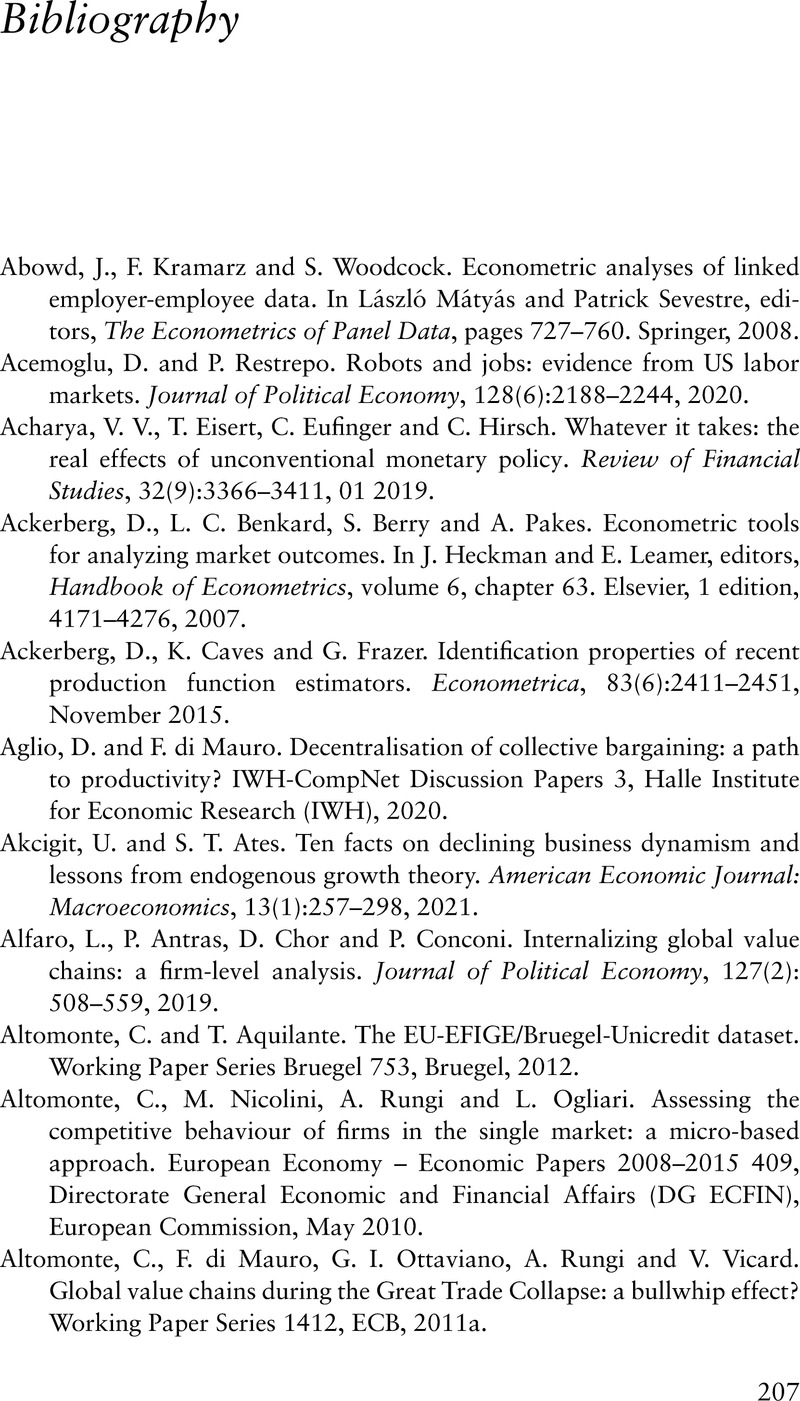Book contents
- Frontmatter
- Contents
- Figures
- Tables
- About the Authors
- Preface
- Acknowledgements
- 1 Introduction
- 2 Basic Concepts
- 3 Productivity Estimation
- 4 Measuring Market Efficiency
- 5 Sources of Data
- 6 Productivity and the Financial Environment
- 7 Productivity and the Labour Market
- 8 Productivity in a Borderless World
- 9 Productivity and Competitive Pressure
- 10 Conclusions
- Bibliography
- Index
- References
Bibliography
Published online by Cambridge University Press: 14 April 2022
- Frontmatter
- Contents
- Figures
- Tables
- About the Authors
- Preface
- Acknowledgements
- 1 Introduction
- 2 Basic Concepts
- 3 Productivity Estimation
- 4 Measuring Market Efficiency
- 5 Sources of Data
- 6 Productivity and the Financial Environment
- 7 Productivity and the Labour Market
- 8 Productivity in a Borderless World
- 9 Productivity and Competitive Pressure
- 10 Conclusions
- Bibliography
- Index
- References
Summary

- Type
- Chapter
- Information
- The Economics of Firm ProductivityConcepts, Tools and Evidence, pp. 207 - 222Publisher: Cambridge University PressPrint publication year: 2022

